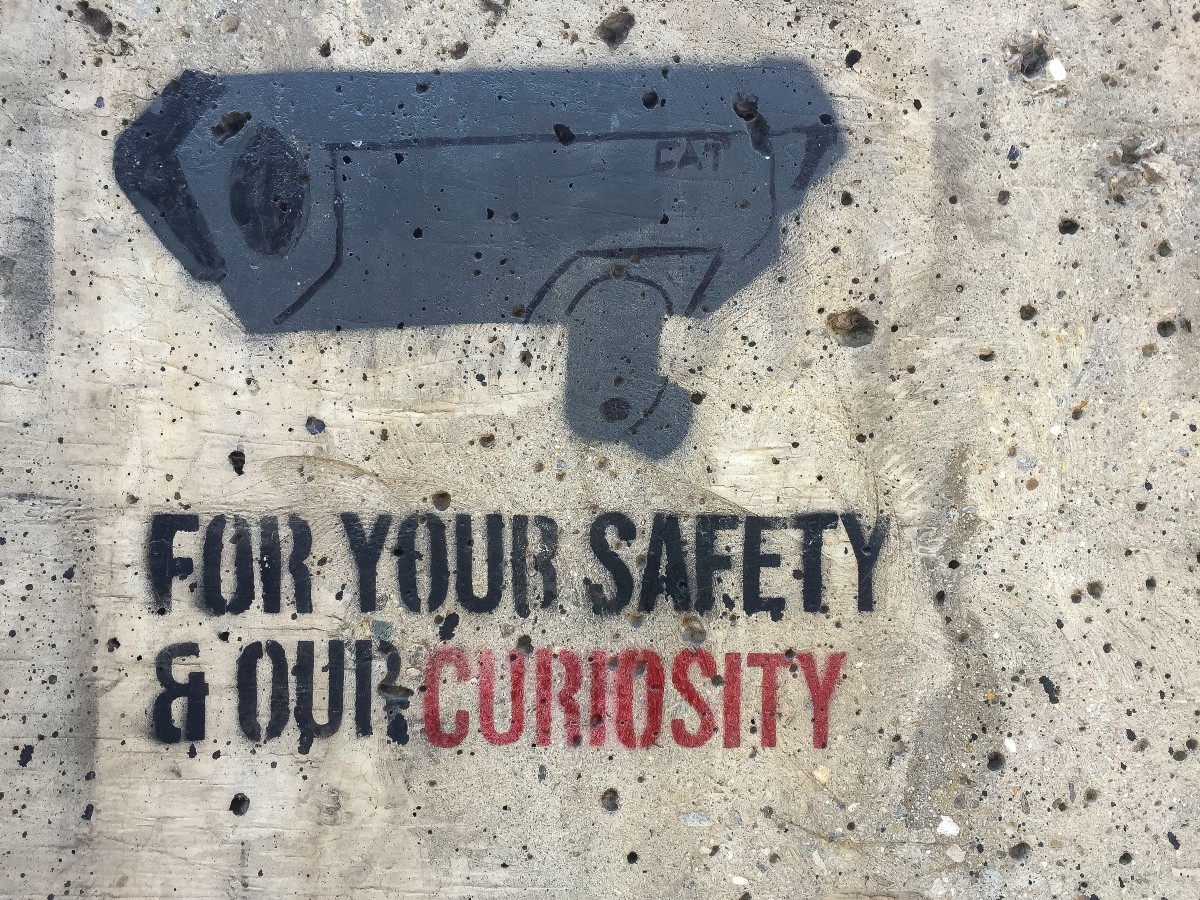By letting the government know where we’ve been, we could help fight COVID-19, but at what cost?

 South Korea has nearly eliminated new infections of COVID-19; they’re one of the success stories of this pandemic. Just how have they done this, without even a stay-at-home order? By tracing the whereabouts of infected people and telling those who might have had contact with them.
South Korea has nearly eliminated new infections of COVID-19; they’re one of the success stories of this pandemic. Just how have they done this, without even a stay-at-home order? By tracing the whereabouts of infected people and telling those who might have had contact with them.
As well as interviewing the infected person, they’re also using GPS location data from their devices, credit card records and even surveillance camera footage to track down their movements.
This might sound quite alarming to people outside of Korea, and so I wanted to talk about how technology might help in fighting coronavirus.

The UK’s approach up til now
In the UK, the main prevention strategies so far have been self-isolation and social distancing, which have had, shall we say, mixed results. The UK has less than 1% of the world’s population and yet (at the time of writing), has over 10% of deaths globally from COVID-19. We have 3,181 confirmed cases per million people, whilst South Korea has just 209.
In the UK, the main prevention strategies so far have been self-isolation and social distancing, which have had, shall we say, mixed results
Apple and Google announce a partnership to help trace coronavirus infections
In mid-April, Apple and Google announced a partnership to tackle ‘contact tracing’ — that is, finding out who has been in contact with whom, in order to warn people who have been close to someone with COVID-19. In the short announcement on the Google blog, the word ‘privacy’ was used three times, including in the opening paragraph. That gives a pretty clear clue as to the top concern they’re hoping to head off — like sending a man with one leg down London Underground’s first escalator to prove it’s safe.
That gives a pretty clear clue as to the top concern they’re hoping to head off — like sending a man with one leg down London Underground’s first escalator to prove it’s safe.
The way Google and Apple propose to work together is firstly to release APIs that allow Android and iOS devices to send data to an app released by public health authorities. Everyone would need to download this (to be announced) app and give their consent for it to log data about their movements. There are two problems here for starters — firstly, not everyone owns a suitable device (2019 research shows 81% of Americans have a smartphone). The second is persuading everyone with a phone to download an app and consent to their data being used and shared.

How does it trace my whereabouts?
In his article for Verge, Chaim Gartenberg says they’ll be using Bluetooth Low Energy (Bluetooth LE) technology. This is a lower-powered form of Bluetooth which uses short pings of activity rather than constant connection, so it won’t drain your phone battery too much. The signal between two devices is stronger, the closer they are to each other. That means — ta-da! — your phone can log the (encrypted) codes of other phones you’ve been near enough to ping. If your phone logged the phone of someone who later tests positive for COVID-19, your app can notify you that you need to self-isolate.

Protecting the UK’s privacy
The UK, though, has rejected Apple and Google’s proposal in favour of their own model. With Apple and Google’s proposition, the data about who has pinged who (to put it simply) are stored on the user’s device. The data are only uploaded if they come down with COVID-19. The UK has opted for a model where all data are pooled centrally by the government, which means they can analyse the data, find patterns, and adapt their strategies if needed. It’s a natural experiment where they could work out, for example, the optimum distance and length of time you can spend safely with another person.
But computer security experts have voiced serious concerns about ‘mass surveillance’ ulterior motives and whether it’s possible to identify individuals from the data. And as Timandra Harkness says in her UnHerd article,
“Emergency measures have a habit of becoming the new normal.”
A lot of the questions now seem to be about whether or not the UK public are willing to give up some of their privacy for the greater good of limiting the spread of coronavirus. I, for one, am okay with that because I think protecting vulnerable people is more important than my privacy.
Don’t forget it’s not logging your location, just the devices that your device has been near. But there need to be definite assurances that the surveillance ends as soon as it stops being necessary, the data are not sold on, and they’re only ever used for absolutely essential analysis.

How the system works in South Korea
However, in South Korea, the government gives quite a lot of detail about patients with COVID-19. In Rough Translation’s podcast episode The Coronavirus Guilt Trip, Anthony Kuhn tells us what it’s like to live in South Korea right now. Every few hours, he receives a siren alert on his phone — not from an app but from the OS — giving him information about a new patient in his area.
“The last one I got was, like, four hours ago, and it says that anyone who’s been to Jack’s Bar, which is a couple of subway stops away from me, anyone who’s been there in the past few weeks needs to self-isolate. And if they show symptoms, then they need to go get tested for the disease.”

Not only is he told the location, but specific detail about the patient — their nationality, age bracket, sex, working hours, where else they went, when they started feeling ill, and even whether they were wearing a mask or not.
The story also makes the patient more relatable and brings the warning home.
On one hand, this level of information is helpful because it helps people work out if they were likely to have had contact with that patient. The story also makes the patient more relatable and brings the warning home. On the other hand, chat rooms all over South Korea are discussing these warnings, trying to identify patients in order to shame them. Why did they still go out for dinner that night? Why did they visit this person? And so on.
Given that the UK system is going to be opt-in, this level of surveillance and information-sharing would make it very unattractive. It would likely put off all but the most avid supporters of social contract theory — the idea that we should forego our own freedoms for the greater good.

How effective would contact-tracing via an app be?
The system being proposed in the UK is one where everyone downloads an app to trace their Bluetooth contacts. Hannah Fry, one of the authors of a paper modelling how different strategies affect the rate of spread, says that if lockdown is lifted, even if 75% UK smartphone owners have the app and self-isolate when necessary, the infection rate would still be exponential.
The contact-tracing app is currently being trialled in the Isle of Wight, an island off the south coast of England. Fry goes on to say that the app only works if the phone is unlocked at all times, which is a serious flaw in the user experience. Every barrier like this will cause a drop-off in acceptance by users, and a corresponding fall in its usefulness as a tool to fight coronavirus. I’m pretty committed to the cause but even for me, that would be kind of a deal-breaker.
The app only works if the phone is unlocked at all times, which is a serious flaw in the user experience

What would work best? What’s feasible to do?
Kucharski et al.’s (2020) paper also introduces other strategies, and I’m going to mention two here:
- Manual tracing of acquaintances. Asking an infected person which of their acquaintances they met with before they came down with COVID-19.
- Restrictions on contacts in other settings. Limiting the number of people you meet outside of your home, work or school. For example, at events.
Their analysis shows that the best way of reducing the infection rate is to combine manual tracing of acquaintances, a maximum of 4 contacts in other settings per day, and self-isolation when necessary. This was the only strategy that meant each infected person would infect, on average, fewer than one other person (effective reproduction rate of less than 1).
The best way of reducing the infection rate is to combine manual tracing of acquaintances, a maximum of 4 contacts in other settings per day, and self-isolation
Manual contact tracing turned out to be better in their analysis than using an app for contact tracing. However, the UK is currently averaging 5,000 new cases per day, and the logistics of interviewing every one of those 5,000 people are huge.
Using an app for contact tracing instead of doing it manually makes this job significantly more manageable, though. Keeping self-isolation and limits on contacts (as above), using an app the effective reproduction rate would be 1.2. This means the growth is still exponential, but a lot slower than some of the other strategies tested. (FYI: with no controls at all, the rate is 2.6).

